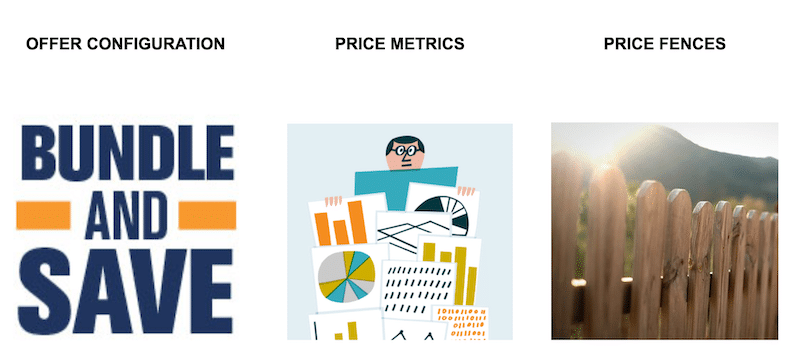With the right pricing, Amazon can be your best business accelerator
If you have been selling and marketing your products on Amazon for some time, I trust you have some pricing horror stories to share! Mine looks like the following: it was one of these moments I had feared would happen for a while. My sales director called me first thing in the morning, saying:
“Tanguy, we’ve got a problem with Amazon. They have lowered their price again on product A, and now Best Buy wants to delist us, as they just cannot match Amazon’s price. We risk losing 30% of our revenue…”
How do you fix such a situation? Or even better, how do you prevent from getting in such a mess in the first place?
As a product and business leader, I’ve had to pave the way and allow some experimentation. One of our businesses moved from almost zero revenue on Amazon to more than 25% of our overall channel mix after a few years, mistakes, and key learnings. Here are the top strategies I’ve seen work that you should consider, too, if you haven’t cracked the Amazon code. Please note that these principles are quite universal and can apply to other marketplaces and platforms.
To be or not to be on Amazon? That is the question!

I know some Amazon critics will say the solution is to avoid the Amazon platform altogether. But, unless you are solely into services and intangibles, chances are your competitors already sell on the Amazon marketplace. You could benefit from your presence on it too. Amazon is also not only for B-to-C (Business-to-Consumer). An increasing volume of business is taking place with B-to-B there too (Business-to-Business).
Yes, succeeding on Amazon is challenging and requires dedication. Their algorithms evolve constantly, and the techniques or programs that worked in the past are often no longer valid. I’m far from being an Amazon expert, so I won’t try to teach you any of the day’s top tactics. Many Amazon consultants can do that for you, but they have to adjust their knowledge regularly. However, these experts rarely help you strategically integrate the Amazon platform in your own mix across the good-old 4P’s (Product, Pricing, Placement, Promotion).
Fix dysfunctional channel strategies first

This is probably the biggest lesson: don’t jump the gun. Get your act together first! Amazon is a formidable selling machine. But, you can’t really beat their ever-changing algorithms. If you have significant weakness in your own channel construct, it will come and haunt you and potentially destroy your profit. To succeed on Amazon, you need to have an already consistent channel strategy and partners under control.
You might say you’re concerned about channel conflicts and Amazon “cannibalizing” your sales in other channels. Then, it is actually a good sign you have a dysfunctional channel strategy that you need to address in the first place!
A good channel strategy is not only about securing the right channel partners. It is also about adapting your offers and pricing to each channel segment and the end-customers they serve. Let’s dig into these two aspects:
Study your channel penetration and act on it

I have experienced the evils of channel over-penetration. You quickly lose control over critical aspects like pricing and product perception. A better option is to be very selective with channels that will serve your customers. So, ask yourself what your end-customers’ preferred destinations are and why: don’t think you need to be everywhere. Do your own research and assess where your next best competitive alternatives are mostly sold. Consult some of the analysts who know your space well. As importantly, consult with your sales force. They are by far the ones who can get the best insights from your channels and capture the right anecdotes. It will help you understand who the key players are and how to succeed with them. The bottom line is: don’t rely on only one source. Keep triangulating to form an educated opinion on your channel landscape.
Once clear on your channel landscape’s total universe, you need to apply another set of filters. This will help you assess which channels you can adequately serve. It’s an important nuance. An example here might be that Apple Stores might be in your total channel universe because you know they’re selling products in your category. But they’re not in the channels you can serve because there are significant barriers to entry, and you simply don’t meet the requirements (yet).
Play the 80/20 rule, as only a small portion of channels will make a large part of your business. Focus on winning with the top serviceable channels that will likely make the difference for you.
Understand the right offering and price structure by channel

With your top channels well-identified, study how they most successfully address your buyer/end-customer audience. In other words, what’s the recipe for success for each of these strategic channels? Here again, getting useful insights by soliciting the experts is critical. Get more context from analysts, your own sales team, and triangulate. Once you know the recipe to success with each of your top channels, you can start working on your price structure.
The secret is to make it challenging for both the channel and the end-customer to compare your offerings across channels. This is a fundamental principle of value-based pricing: master your price structure! An adequate price structure will help capture the best possible price for each customer segment. If you want more insight on price structure, you can read my other article on “Strategic Pricing”. A good illustration of a price structure is how you choose the offer configuration, like bundles.
When you think of your Amazon offering, you also don’t need to offer all your products there. Start small, have a few standard SKU’s and work on optimizing your offering by adding unique SKU’s or bundles. These will bring differentiated perceived value and make a direct comparison harder.
Optimize your presence on the Amazon platform

You’ve done your due diligence to eliminate significant inconsistencies in your channel strategy and reduce the risk of conflicts. Now is the time to optimize for Amazon. It’s where hiring the right experts or consultants will help make a difference. Above the pure tactics, here are a few more principles we applied that helped us big time:
Pay specific attention to what matters to Amazon end-customers
To win, you need to meet the non–negotiable expectations. For instance, if the norm is free shipping delivered fast, just make sure your shipping strategy is optimized for this and doesn’t end up eating your profit.
Optimize your content and marketing spend to hit the top of the search results
The Amazon platform is like its own Google: you need to make sure your content is the most compelling in your category and leads to purchase. Equally, investing in the right keywords and placing suitable ads will go a long way in getting you to the top.
Define your price window and automate
Once you have established the right price structure, you still need to keep in mind how you stand against your next best competitive alternatives. Price levels tend to fluctuate daily in dynamic categories on the Amazon market place. So, make sure you have identified your bottom price (mapping to your minimum acceptable profit) and your maximum price (profit optimized). Once the min-max price window is set, automate your pricing so that you maximize your chances of winning the buy box without much overhead.
In Conclusion
The Amazon marketplace will be your worst nightmare if you have a dysfunctional channel strategy. The good news is: you can act on it! With proper analysis, you can ensure a clean and impactful channel presence with differentiated offering by key customer segment and their preferred channels.
Successful selling on Amazon and other marketplaces requires serious dedication. But it’s worth the effort and the investment for most companies selling goods both in the B-to-B and B-to-C spaces
I’m genuinely interested in getting your feedback on this topic! How successful have you been with your own Amazon strategy? Which other considerations worked for you? Just comment on this blog or drop me a note on The Product Sherpa site!
And, if you want to optimize your own strategy and maximize profit, The Product Sherpa is here to help you. We offer custom makeover programs for tangible results in just a few weeks. You can drop us a note, or schedule a free exploratory call.
